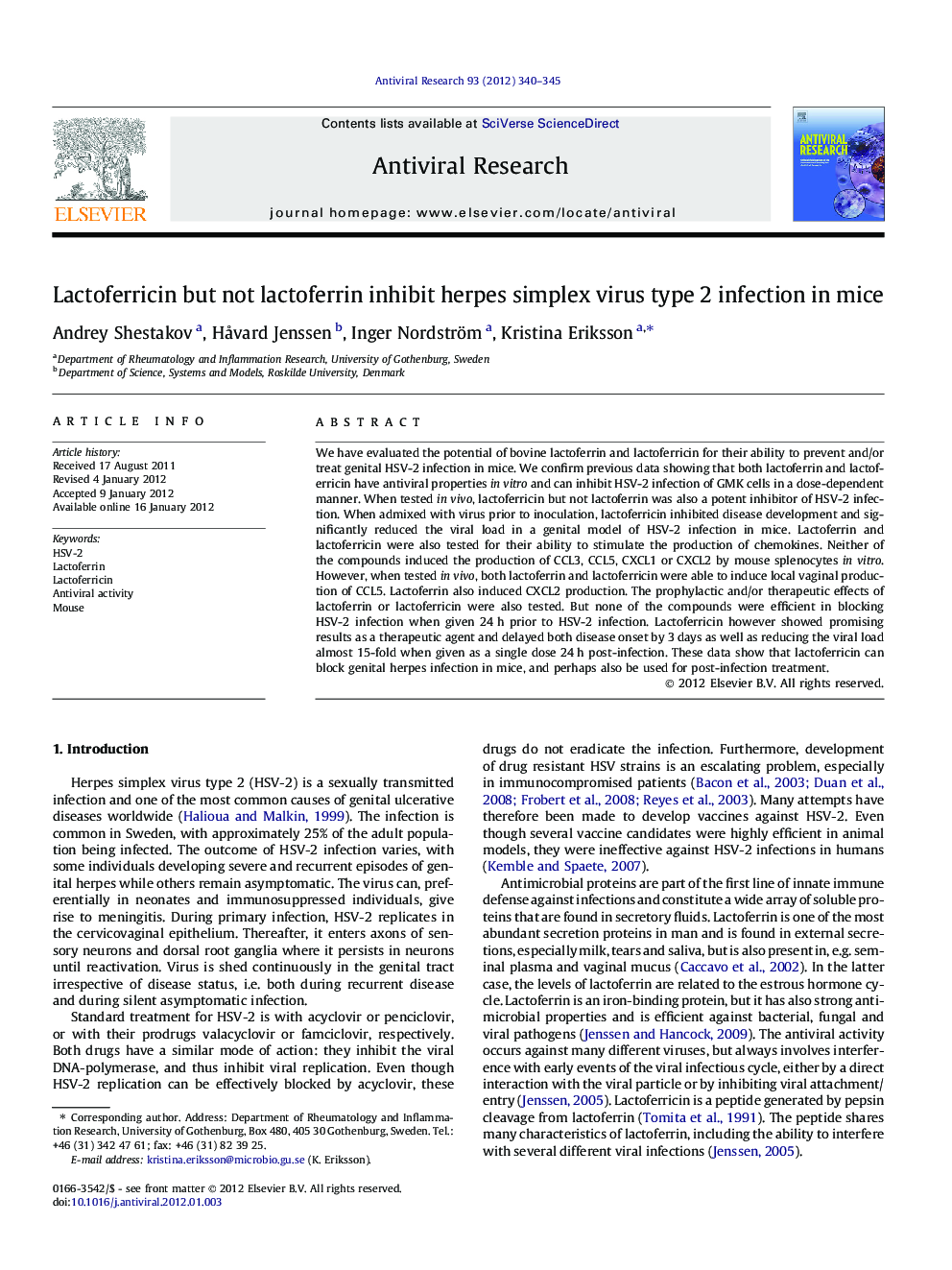| Article ID | Journal | Published Year | Pages | File Type |
|---|---|---|---|---|
| 2510041 | Antiviral Research | 2012 | 6 Pages |
We have evaluated the potential of bovine lactoferrin and lactoferricin for their ability to prevent and/or treat genital HSV-2 infection in mice. We confirm previous data showing that both lactoferrin and lactoferricin have antiviral properties in vitro and can inhibit HSV-2 infection of GMK cells in a dose-dependent manner. When tested in vivo, lactoferricin but not lactoferrin was also a potent inhibitor of HSV-2 infection. When admixed with virus prior to inoculation, lactoferricin inhibited disease development and significantly reduced the viral load in a genital model of HSV-2 infection in mice. Lactoferrin and lactoferricin were also tested for their ability to stimulate the production of chemokines. Neither of the compounds induced the production of CCL3, CCL5, CXCL1 or CXCL2 by mouse splenocytes in vitro. However, when tested in vivo, both lactoferrin and lactoferricin were able to induce local vaginal production of CCL5. Lactoferrin also induced CXCL2 production. The prophylactic and/or therapeutic effects of lactoferrin or lactoferricin were also tested. But none of the compounds were efficient in blocking HSV-2 infection when given 24 h prior to HSV-2 infection. Lactoferricin however showed promising results as a therapeutic agent and delayed both disease onset by 3 days as well as reducing the viral load almost 15-fold when given as a single dose 24 h post-infection. These data show that lactoferricin can block genital herpes infection in mice, and perhaps also be used for post-infection treatment.
► Genital co-administration of lactoferricin with HSV-2 is blocking the infection. ► Lactoferrin and Lactoferricin induce local vaginal production of CCL5. ► Lactoferricin, given therapeutically delay the onset of the HSV-2 infection.
